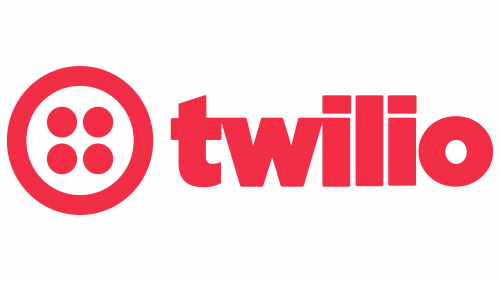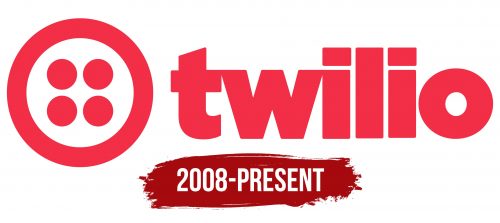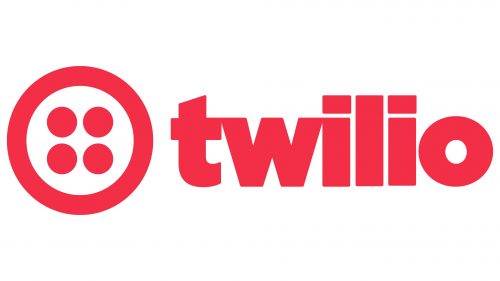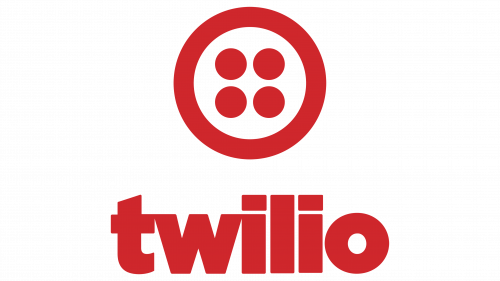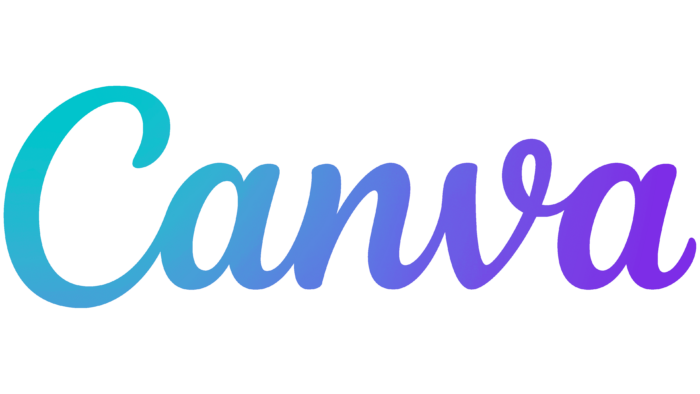Although the Twilio logo is abstract, it conveys the brand’s key values: accessibility, simplicity, and efficiency. The communication solution provider deliberately shrouds itself in mystery: its emblem and name do not indicate what it does. Such intrigue generates interest among application developers, the company’s target audience.
Twilio: Brand overview
The brainchild behind Twilio was engineer Jeff Lawson, who wanted to simplify the process of business interaction with customers. Not receiving the expected support from investors, he teamed up with John Wolthuis and Evan Cooke to start a joint venture. They founded Twilio in 2008 and pondered integrating different communication channels into applications. Over time, APIs for making calls (in 2008) and messaging (in 2010) were launched. The company continues to develop new products and is actively expanding. It acquires various firms and platforms, such as Ionic Security, Electric Imp, SendGrid, and Beepsend.
In 2008, Jeff Lawson, Evan Cooke, and John Wolthuis started Twilio to change how businesses talk to customers. Lawson was motivated by his struggles with adding communication to an app he worked on before Twilio. He wanted to make it easier for other developers to do this without building complex systems from the ground up.
Twilio began by offering APIs for voice calls and SMS, which let developers easily add these features to their apps. This move opened many doors for app development.
Twilio’s big break came in 2009 when it launched Twilio Voice at the TechCrunch Disrupt conference, catching the eye of developers and investors alike. This led to their first major funding boost.
As time passed, Twilio added more services like MMS, shortcodes, and the ability to communicate internationally, attracting big names like Uber, Airbnb, and Netflix. In 2011, a $12 million Series B funding helped Twilio grow its team and improve its infrastructure. By 2013, over 150,000 developers were using its services.
In 2015, Twilio introduced new products, including Twilio Programmable Video and Twilio Studio, which enhanced its offerings. These innovations helped take Twilio public in 2016, raising $150 million in one of the tech sector’s standout IPOs that year.
Post-IPO, Twilio kept expanding, notably acquiring SendGrid, an email platform, for $2 billion in 2018. This expanded Twilio’s reach into email communications.
Today, Twilio is a leading name in cloud communication platforms, serving over 250,000 customers and continuing to innovate with products like Twilio Flex. With a market value of over $50 billion, Twilio has reshaped business communications, showing what’s possible with vision, innovation, and effective execution.
Meaning and History
In coining such an original name for Twilio, the company founders experimented with different sounds that could be associated with telephone communication. They recorded suitable options and then checked for available internet domain names. The domain “Twilio.com” was free and cost only $7 at the time. This determined the naming outcome. A pleasant bonus was that the chosen name resonated with the word “Twitter,” evoking pleasant emotions in people. It served as the basis for the logo, combining the inscription with an abstract geometric symbol resembling a button.
What is Twilio?
Twilio is a provider of cloud computing platforms. This American company offers developers tools (APIs) for integrating various communication methods into applications. Innovative solutions allow users to make calls and exchange text messages directly within the program without closing it. The company was founded in 2008 and was initially located in Seattle, Washington. Later, its headquarters moved to San Francisco, California.
2008 – today
The emblem of the American company contains an image of a button: a white circle with four red dots inside. It conveys the idea of interaction, as this sewing accessory connects clothing elements. In the context of Twilio, it’s about ‘connecting’ people since the company offers solutions for integrating various types of communication into applications. That is, the button represents a tool that expands communication capabilities. The large circle also symbolizes a closed environment where direct communication can occur.
The abstract drawing occupies the logo’s left part, and the brand name is on the right. The designers have converted all letters to lowercase to evoke a sense of accessibility and friendliness. Although the glyphs are bold and merge in several places, this does not impair the inscription’s readability. The perfectly round “o” at the end of the word harmonizes with the button’s shape. The rectangles replacing the dots over the “i”s create visual balance, preventing the circles from dominating.
Font and Colors
The cloud communications platform’s font family, Twilio Sans, was developed by Sharp Type in 2022. However, it is not used in the logo—the designers created a unique sans-serif typeface for the wordmark. It features many simple geometric shapes: both “i”s and “l” consist of rectangles of different sizes, and “o” looks like a round ring. The top of “t” is cut at an acute angle, and the vertical stroke is slightly shifted to the right.
The inscription and the abstract drawing are in the company’s signature color—red—combined with white, creating an attractive contrast.
FAQ
What is Twilio used for?
Twilio is a cloud communications platform that helps businesses worldwide communicate with their customers through messaging and other means. Its key feature, Twilio MessagingX, lets businesses send large-scale messages such as SMS, MMS, and WhatsApp.
What makes Twilio stand out is how it smooths out communication. Businesses can send anything from basic text alerts to multimedia messages or chats through WhatsApp. Twilio MessagingX has everything needed for this, making it straightforward.
Developers love Twilio because it’s reliable, reaches far, and is easy to use. With Twilio’s APIs, they can hook Twilio into their apps, websites, or services, scaling up communication efforts no matter the business size. This flexibility means any business can keep in touch with customers, automate messages, or run marketing efforts where customers like to chat.
Twilio MessagingX bridges the gap between businesses and customers, making it simpler to keep in touch, build loyalty, and keep customers engaged with messages.
What is the brand color of Twilio?
Twilio’s signature color is Twilio Red, a bright and unique shade that’s more than just a color—it stands for moments that truly matter. Twilio uses this color thoughtfully across its branding, like in illustrations, logos, and symbols. This choice ensures Twilio’s presence pops in important moments while keeping things low-key within its product environments. This strategy helps keep users focused, highlighting key information without disrupting everything. Essentially, Twilio Red plays a big role in how the company presents itself, striking a balance that draws people in and makes the brand memorable.
Is Twilio a US company?
Twilio Inc. is an American company headquartered in San Francisco, California. It’s well-known in tech for its cloud communications platform, which many businesses globally use for different communication tasks. Twilio allows companies to add various communication features to their applications, like making phone calls, sending texts, and more, through its APIs. This makes it easier for businesses to connect with their customers. Thanks to its innovative tools, Twilio has become a leading name in communication technology, helping developers and businesses improve communication.
What is Twilio best for?
Twilio shines in changing how apps talk to users, offering a strong platform that supports smooth communication through various channels. Its MessagingX suite is great for helping businesses connect with their customers personally, matching their favorite communication methods.
At the heart of Twilio’s work are its APIs, such as the Programmable Messaging API, Conversations API, and Verify API. These let businesses send texts and multimedia messages worldwide, even using popular apps like WhatsApp and Messenger. This means businesses can reach a wide audience, no matter their messaging preference.
- Programmable Messaging API: This API lets businesses send texts and multimedia messages, making it easy to share detailed information with customers.
- Conversations API: Enhances how businesses talk to customers by letting conversations flow smoothly across different messaging services without mixing up the context.
- Verify API: This API boosts security by implementing two-factor authentication and one-time passwords, ensuring that only the right people can access important information or perform actions in an app.
Twilio’s real power is in scaling communication, allowing all kinds of businesses to reach millions of users worldwide reliably and effectively. Whether for marketing, customer service, or keeping things secure, Twilio’s tools meet the complex needs of today’s digital communication, making it essential for businesses to improve how they connect with customers.
What is the meaning of Twilio?
Twilio has quickly become an essential platform for over 300,000 businesses worldwide, from startups to large corporations, and a key tool for more than 10 million developers. It offers the technology needed for businesses to create unique and effective ways to communicate with customers through various communication methods.
Twilio’s flexibility and strong APIs make it special, which lets developers add voice, video, text, and email functions to their apps. This means businesses can easily connect with their customers, making interactions more direct, engaging, and meaningful, no matter where the customer is or what device they use.
Twilio makes advanced communication technology easy and accessible for all businesses. It provides a scalable solution tailored to any business’s needs, helping them improve customer service or streamline communication processes.
With Twilio, businesses can create custom communication strategies that speak to their customers, build loyalty, and increase engagement. Whether sending instant updates, having real conversations, or hosting virtual meetings, Twilio gives businesses the tools to create the customer experiences they want. Essentially, Twilio acts as a bridge, enabling better and more personal connections between businesses and their customers and transforming how they interact.
